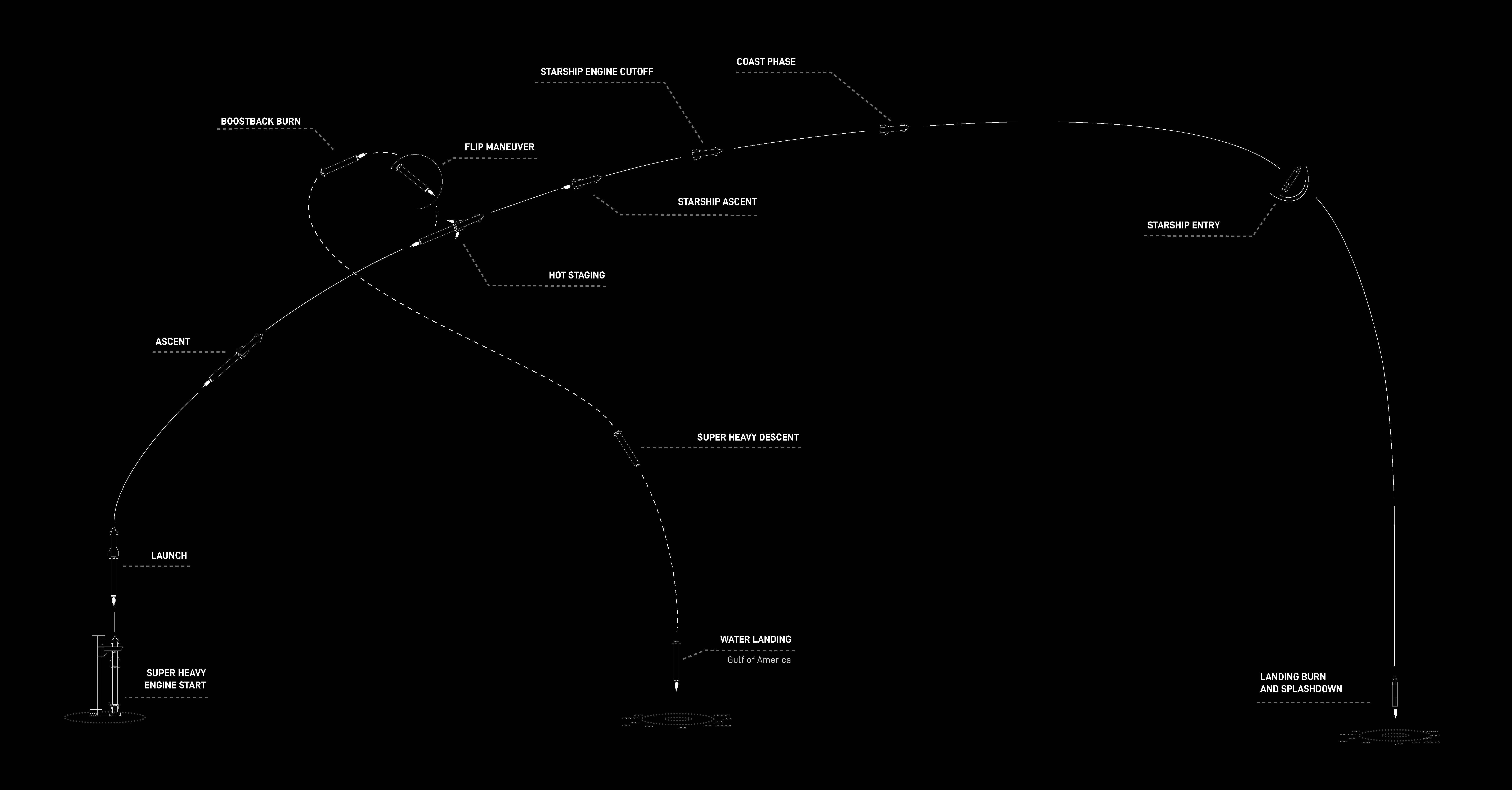The eleventh flight test of Starship is preparing to launch as soon as Monday, October 13. The launch window will open at 6:15 p.m. CT.
A live webcast of the flight test will begin about 30 minutes before liftoff, which you can watch on X @SpaceX. You can also watch the webcast on the X TV app. As is the case with all developmental testing, the schedule is dynamic and likely to change, so be sure to check in here and stay tuned to our X account for updates.

The upcoming flight will build on the successful demonstrations from Starship’s tenth flight test with flight experiments gathering data for the next generation Super Heavy booster, stress-testing Starship’s heatshield, and demonstrating maneuvers that will mimic the upper stage’s final approach for a future return to launch site.
The booster on this flight test previously flew on Flight 8 and will launch with 24 flight-proven Raptor engines. Its primary test objective will be demonstrating a unique landing burn engine configuration planned to be used on the next generation Super Heavy. It will attempt this while on a trajectory to an offshore landing point in the Gulf of America and will not return to the launch site for catch.

Super Heavy will ignite 13 engines at the start of the landing burn and then transition to a new configuration with five engines running for the divert phase. Previously done with three engines, the planned baseline for V3 Super Heavy will use five engines during the section of the burn responsible for fine-tuning the booster’s path, adding additional redundancy for spontaneous engine shutdowns. The booster will then transition to its three center engines for the end of the landing burn, entering a full hover while still above the ocean surface, followed by shutdown and dropping into the Gulf of America. The primary goal on the flight test is to measure the real-world vehicle dynamics as engines shut down while transitioning between the different phases.
The Starship upper stage will target multiple in-space objectives, including the deployment of eight Starlink simulators, similar in size to next-generation Starlink satellites. The Starlink simulators will be on the same suborbital trajectory as Starship and are expected to demise upon entry. A relight of a single Raptor engine while in space is also planned.

The flight test includes several experiments and operational changes focused on enabling Starship’s upper stage to return to the launch site on future flights. For reentry, tiles have been removed from Starship to intentionally stress-test vulnerable areas across the vehicle. Several of the missing tiles are in areas where tiles are bonded to the vehicle and do not have a backup ablative layer. To mimic the path a ship will take on future flights returning to Starbase, the final phase of Starship’s trajectory on Flight 11 includes a dynamic banking maneuver and will test subsonic guidance algorithms prior to a landing burn and splashdown in the Indian Ocean.








Leave a comment